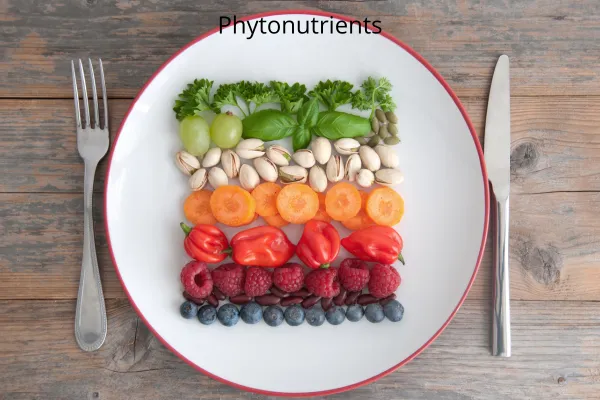
What Are Phytonutrients?
What Are Phytonutrients and How Do They Benefit People Over 40 with Diabetes?
Most people know about macronutrients—proteins, fats, and carbohydrates—and essential vitamins and minerals. But fewer know about phytonutrients. These are natural compounds in plants that give big health benefits. They are especially important for people over 40 who have diabetes.
What Are Phytonutrients?
Phytonutrients, also called phytochemicals, are compounds found in fruits, vegetables, grains, nuts, seeds, and herbs. They are not essential like vitamins or minerals, but they have powerful benefits.
Phytonutrients act as antioxidants, reduce inflammation, and help the body detox. They support the immune system, reduce oxidative stress, and improve heart health. All of these are important for women managing diabetes.
Why Are Phytonutrients Important for Women with Diabetes?
People over 40 with diabetes can benefit from phytonutrients in several ways:
Improve insulin sensitivity and help regulate blood sugar (source)
Reduce inflammation, which contributes to insulin resistance
Support heart health by lowering cholesterol and blood pressure
Promote healthy weight management, which helps blood sugar control
Protect against complications like neuropathy, kidney disease, and vision problems
6 Steps to Add More Phytonutrients to Your Diet
Prioritize Quantity & Diversity
Aim for 9–13 servings of plant foods daily—non-starchy vegetables, fruits, nuts, seeds, and legumes.
A large salad with colorful veggies can provide 4–5 servings in one meal.
Expand Beyond Fruits and Vegetables
Use herbs, spices, nuts, seeds, whole grains, and teas to boost phytonutrient intake.
Different colors mean different benefits. Try one to two servings of each color daily:
Red: Tomatoes, red peppers, strawberries → heart health
Orange/Yellow: Carrots, pumpkin, turmeric → immunity, vision
Green: Spinach, kale, broccoli → detox, bone health
Blue/Purple: Blueberries, grapes, eggplant → brain health
White/Tan: Garlic, onions, mushrooms → immune support
Combine Foods
Make smoothies, soups, or grain bowls with multiple phytonutrient-rich foods.
Be Creative with Substitutions
Replace white rice with quinoa, white cauliflower with purple, or chips with edamame.
Choose Whole, Minimally Processed Foods
Avoid ultra-processed foods that remove beneficial compounds.
Key Phytonutrients and Their Benefits
Carotenoids (Red, Orange, Yellow foods)
Found in carrots, sweet potatoes, tomatoes, bell peppers
Support eye health, immune system, and skin
Flavonoids (Green tea, onions, berries)
Help lower blood sugar, reduce inflammation, and improve heart health
Catechins in green tea → aid glucose metabolism
Quercetin in apples, onions, berries → reduce insulin resistance
Resveratrol (Red grapes, blueberries, dark chocolate)
Supports heart health and anti-aging
May improve blood sugar and insulin sensitivity
Glucosinolates (Cruciferous vegetables)
Found in broccoli, cauliflower, Brussels sprouts
Support liver detoxification and reduce cancer risk
Phytoestrogens (Flaxseeds, soy, sesame seeds)
Help balance hormones in menopausal women
May reduce insulin resistance and improve metabolism
Scientific Support & References
American Diabetes Association (ADA): Phytonutrients and diabetes prevention (diabetes.org)
Harvard T.H. Chan School of Public Health: Plant-based diets and metabolic health (hsph.harvard.edu)
National Institutes of Health (NIH): Flavonoids and insulin sensitivity (nih.gov)
Journal of Nutrition: Carotenoids and cardiovascular health (jn.nutrition.org)
Key Takeaway
Adding more plant-based foods doesn’t mean you have to go vegan. Making plant foods the foundation of your meals can improve blood sugar, lower inflammation, and protect long-term health.
Start small: Add one extra serving of vegetables, swap refined grains for whole grains, and explore colorful, phytonutrient-rich foods daily. Your body will thank you!
